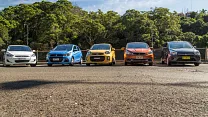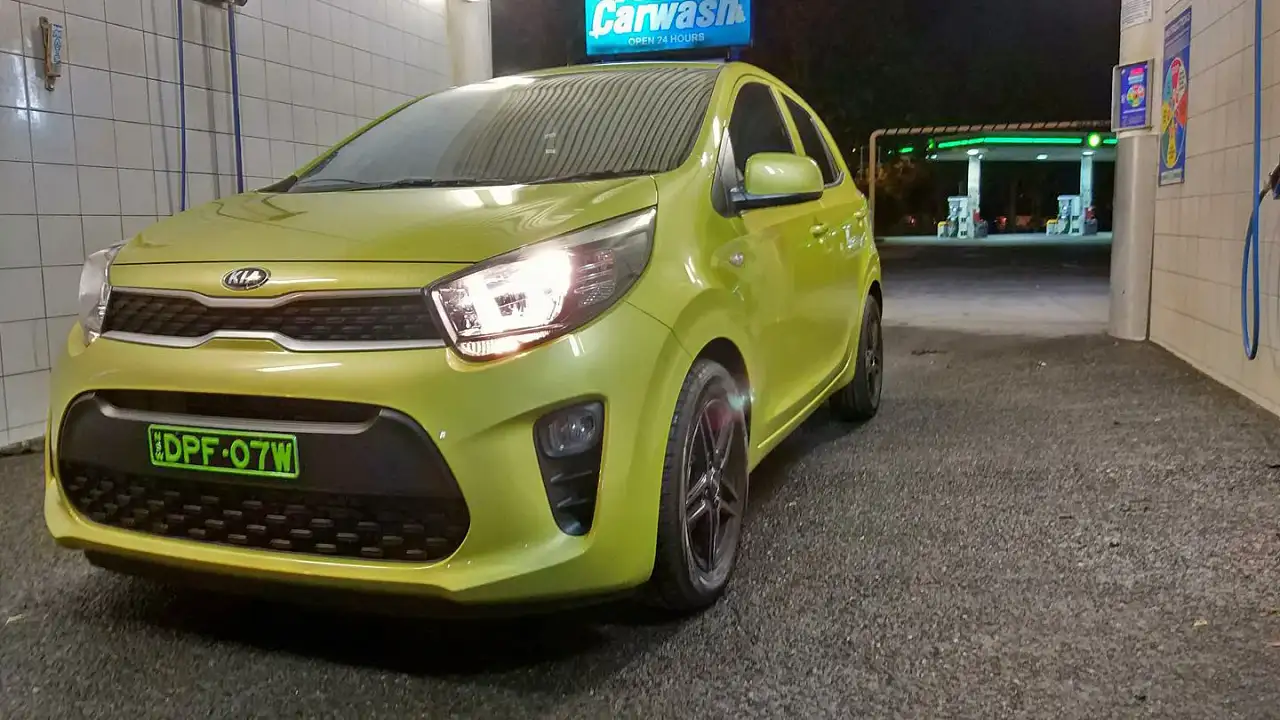As two seniors, we were looking for the smallest, sensibly-priced new "city" car that we could buy. It had to be no bigger than a Yaris and had to be automatic, as Sydney traffic these days is getting too heavy for the daily grind of the manual we have used for the last decade. We narrowed the prospective field down to the Suzuki Ignis, Mitsubishi Mirage, Toyota Yaris and of course, the Kia Picanto under review.
We found during test driving that the Picanto was noticeably more refined, with a "bigger car" feel than the other three, despite actually physically being the smallest of the four (actually no bigger than the diminutive 1 litre 1987 Daihatsu Charade - except for an additional 10cm of roof height). The steering and ride in particular are standout features compared to the competition, especially over Sydney's abominable, chronically "road worked" carriageways.
The engine and driveline are not as good as that of the Ignis (which we found to be the best of the four in this respect) in terms of refinement, smoothness and power delivery, however it still proves more than adequate for driving around the city and outskirts. The car can also easily maintain any legal speed limit up steep urban hills with two people on board though at 100 - 110 kmh there is not much in the way of reserve power for overtaking up hills - manoeuvres such as this require much more forward-planning than any car would in the larger ("small car") category (i.e. Fiesta, Mazda 2, etc).
We actually like the idea of the "antiquated-technology" 4-speed automatic but if we are being pedantic, we would have preferred that it came with at least 5 speeds even if the asking price was up to $1,000 higher. Even though the two CVT cars we test drove (Ignis and Mirage) felt very nice and by virtue of the technology arguably used their available power more efficiently, we were concerned about very long term (more than ten years) reliability, especially given this car would spend a lot of its life in slow traffic though still amassing a high number of kilometres overall.
Again, being extremely pedantic, however, the Picanto does seem to be a little too enthusiastic to get into 4th (top) gear at very low speeds, mainly (I assume) in order to save fuel. Yes, we do of course move the gear leaver to third in areas with speed limits not exceeding 50 kmh in order to avoid this, but I would have much preferred that third gear was tiny bit taller to begin with, 4th gear significantly lower than it currently is and then the car be equipped with at least an additional 5th ratio, perhaps two or three kilometres per 1,000 RPM taller than the existing 4th gear. This arrangement would work significantly better at the common speed range of 50 to 80 kmh on our Sydney roads. In its present 4-speed incarnation, however, with its propensity to get into top gear as soon as possible at low very speeds, the driveline falsely conveys a slightly laboured and rough feel - even on the flat. It is actually perfectly fine of course, but it just doesn't feel that way when the engine speed is below around 2,000 RPM in top gear. Mind you, the Yaris automatic only has 4-speeds as well, so getting beyond 4 ratios apparently isn't really an option within this price range, though of course you can dispense with set ratios altogether with the two CVT car choices (Ignis and Mirage).
That said, the car is very competent using the first three ratios around the city - sufficiently eager to kick down and with exceptionally smooth and refined gear changes that belie the class, cost and power specification of the car. The Yaris automatic, on the other hand, felt terribly unrefined and schizophrenic, often unable to select a suitable (let alone optimal) ratio at all and stick with it.
The only really bad point about this car with respect to class and asking price is the (apparently) incredibly soft and fragile windscreen glass that Kia appears to use. Despite only receiving one tiny stone chip in ten years in our previous car, in the Picanto we've copped two already within the first month, despite extremely careful driving and maintaining very safe following distances. It seems that even the smallest and most "delicate" impacts will cause micro craters in the front glass and I will be extremely surprised if this car manages to get through its first year without requiring a new windscreen. As petty as this complaint might seem to some, I think it is a genuine concern - especially for Sydney buyers - given that motorways such as the M7 and M2 seem to be chip magnets. I really would rather that Kia use the same strength glass as companies such as Toyota, even though I do understand that this may possibly cause the car to score more poorly in pedestrian-related crash tests. Bottom line appears to be, however, that if you buy this car, make sure you have windscreen insurance added to your policy. The windscreen won't likely crack per see, but its susceptibility to "micro impacts" is extremely annoying.












































































